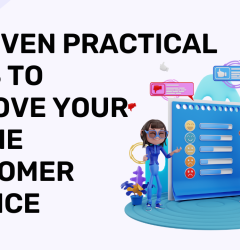17 Jun

Introduction:
Over the last decade, two of the most notable trends have emerged: personalization and high-quality customer service.
Personalized content is everywhere you look:
In the adverts you see on social media, the videos you’re recommended on YouTube, and even the emails you get – it’s all tailored to your preferences.
To stay relevant and ahead of the curve in today’s competitive industry, businesses must deliver more than simply an excellent product or service to clients.
It is critical to concentrate on offering a unique customer experience that encourages them to return.
What does it mean to provide personalized customer service?
Personalized customer service is a marketing method used by firms to take an individualized approach to client problems and deliver tailored answers.
Their name, as well as their user history, demographics, purchase habits, and a few other criteria that we’ll discuss later, are all part of that data.
Customer service personalization also entails adapting the experience to the particular customer’s demands in order to make their website journey as easy and painless as possible.

When customers receive personalized customer care, they will feel more connected to the firm and will be more satisfied.
Many studies have shown how important customer service and personalization are to customers.
More than 80% of individuals are willing to pay a higher price for a better customer experience. They’re willing to spend more for more expensive goods!
- Personalization can be utilized to match each customer’s expectations and give value based on their individual preferences and tastes.
- Customers might receive customized offers and discounts based on their previous interactions with the company.
- Personalized service can help businesses make consumers feel valued, which can have a significant influence on the bottom line.
You must understand the influence of individualized customer service on your brand in order to run a successful business. Personalized customer service can benefit a company in a variety of ways, including:
- Customer Retention at Its Greatest
- Customer Experience Enhancement
- More Effective Lead Generation
- Increased Conversion Rate
Importance of Personalization in Customer Service
“The future competitive battleground is customer experience. It’s where a company’s success or failure is determined.”
All organizations aspire to provide high-quality, smooth customer service. Customers must be happy and satisfied for businesses to succeed.
Maintaining positive customer relations not only helps the company earn trust and loyalty, but it also aids in the acquisition of new clients.
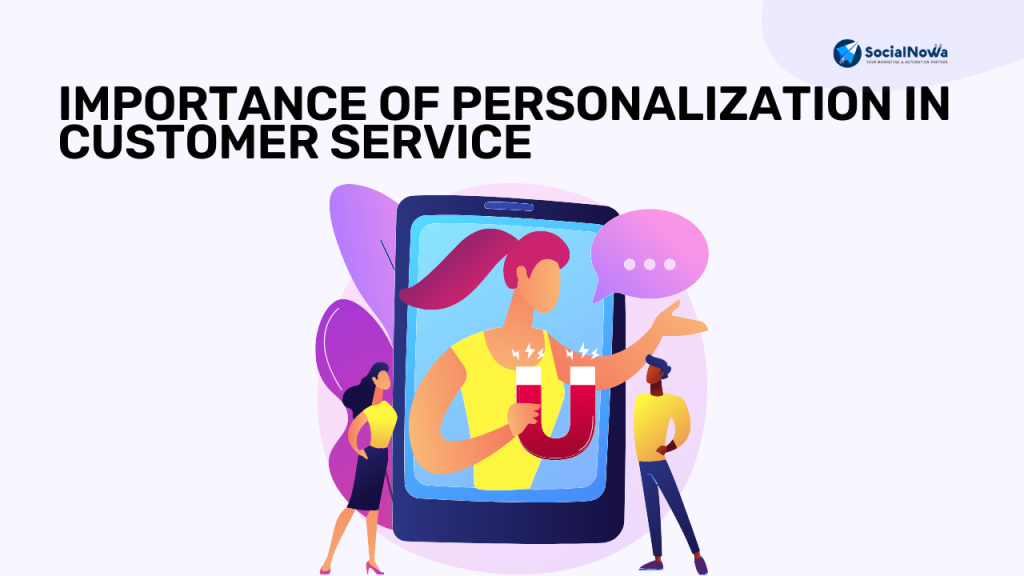
As a result, it is critical for a company to reach out to clients in the most effective manner possible and to provide the precise services that they require.
The entire concept of personalization relies around exceeding each customer’s expectations.
What Makes Personalized Customer Service So Important?
When clients contact a company or organization with an issue, all they want is a full solution.
They want a single point of contact for all of their issues, without having to go through several steps of resolution, excessive wait times, or inadequate responses.
Providing customers with customized services that are tailored to their specific needs can assist in the development of meaningful relationships.
These connections can give firms an advantage over competitors who don’t place a premium on customer service.
There are 8 different ways to provide personalized customer service.
1. Become familiar with your customers
To begin, organizations should concentrate on getting to know
their clients thoroughly in order to establish positive customer relationships.
Customer service representatives must interact with consumers to learn about their wants and needs.
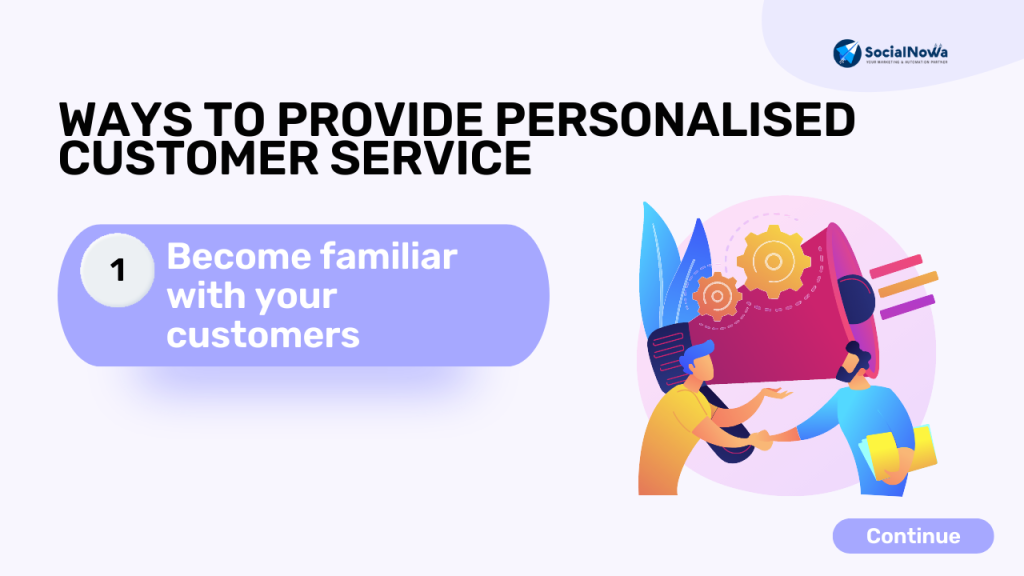
Knowing what customers want by having a productive dialogue with them can assist organizations in determining the target market.
A productive discussion will lead to achieving the customer’s expectations as well as exploring the various areas that require improvement.
2. Create a multi-channel experience
When it comes to interacting with businesses, not every customer prefers the same communication medium.
While some people prefer to obtain support via live chat, social media, or messaging apps, others prefer to send an email, and still others prefer to call.
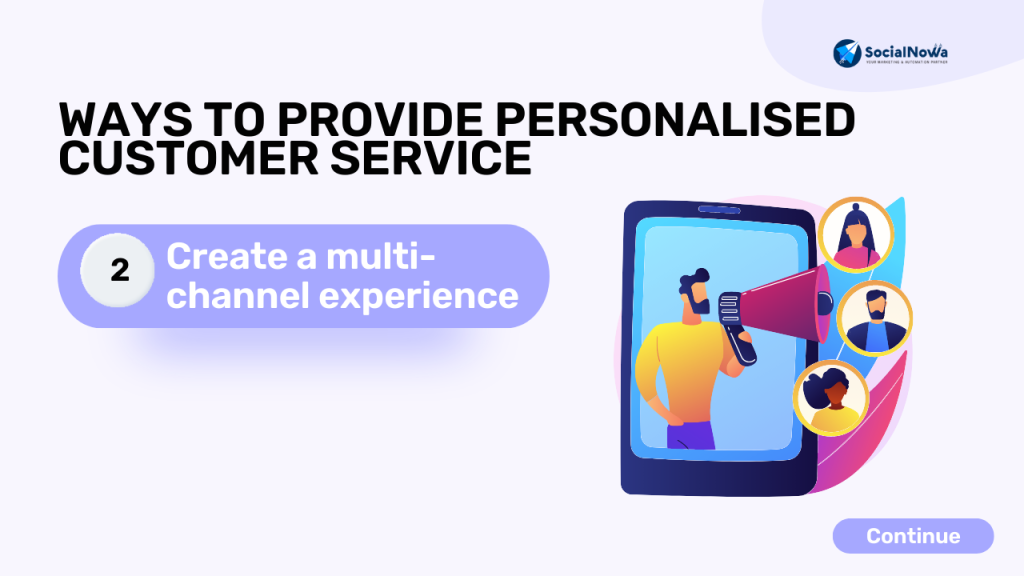
You never know which channel your consumers may use to contact you. Over 35% of customers want to speak with the same customer support representative regardless of channel.
3. Request feedback and reviews from customers
Businesses should be on the lookout for methods to improve their customer service. Each customer may have a unique relationship with the brand and its products. As a result, knowing what your consumers think about your product and services is critical as a business.
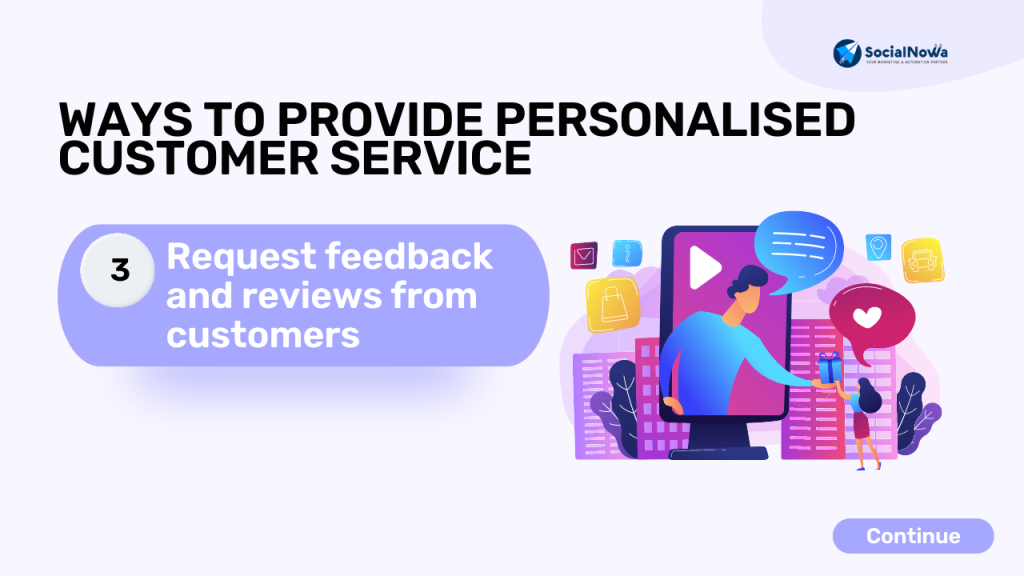
Because not every client has a positive experience, customizing customer interactions allows businesses to consider the opposite side of the equation.
Customer input should be solicited and studied in order to improve future services and provide the greatest customer experience possible.
4. Make your material unique
If all types of visitors see the same material on your website, your customer interaction approach is ineffective in terms of personalization.
Your firm can’t afford to talk directly to each visitor in today’s world, where personalization reigns supreme.
In some way, 92 percent of marketers say they use content personalization.
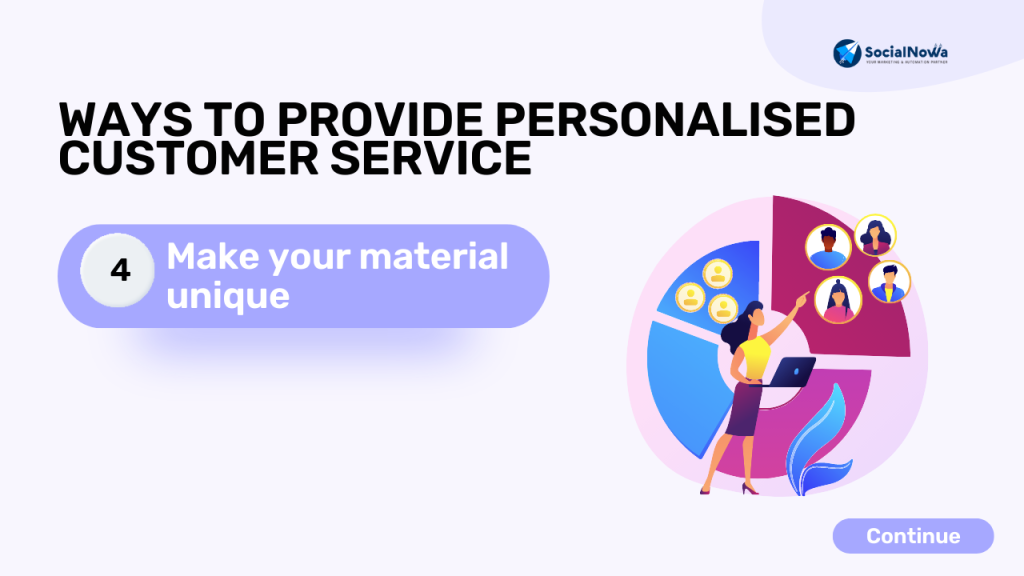
Personalization of content is essential since it allows you to present distinct information and calls to action (CTA) to each visitor.
Customers must feel as if the page was created specifically for them, which can only be achieved by displaying tailored content.
As a result, brands should consider utilizing all available customer data, especially data related to geography and demographics, to make their content strategy more potent and tailored.
5. Allow your consumers to choose from a number of different options.
Customers must be given a variety of viable options from which to pick. A customer who visits a company’s website may require additional assistance. As a result, firms should provide a variety of customer care choices for customers to use when browsing their diverse channels.
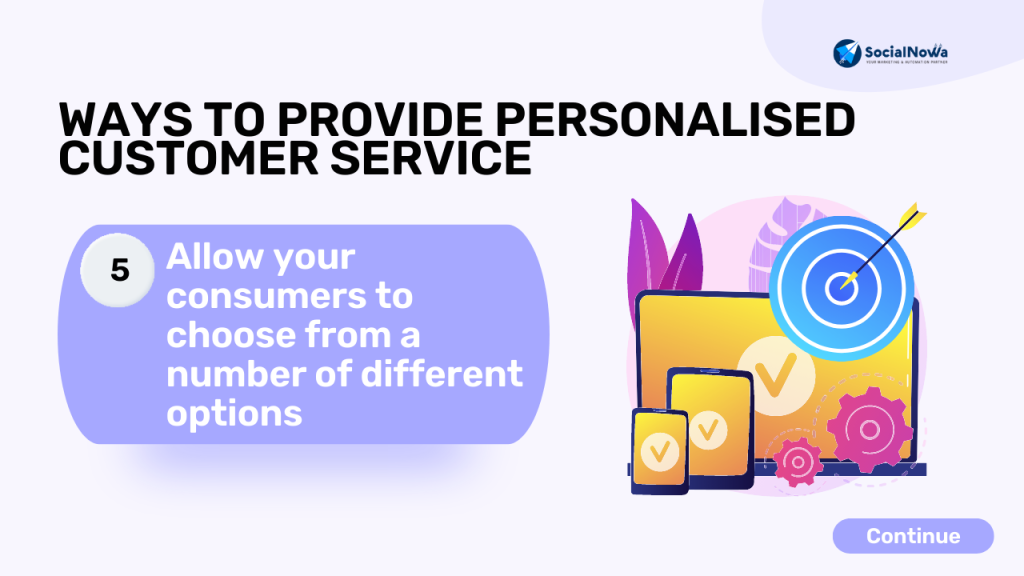
If a customer is attempting to navigate a website’s help section, for example, he or she may be presented options such as chat support or a phone contact with a live agent. It personalities the user experience by allowing users to select an option that best suits their needs.
6. Make yourself available to your customers
Once organizations have a good understanding of their clients, they should focus on making their brand/company available to them via IVR and missed call alerts.
Customer care representatives must be available 24 hours a day, seven days a week.
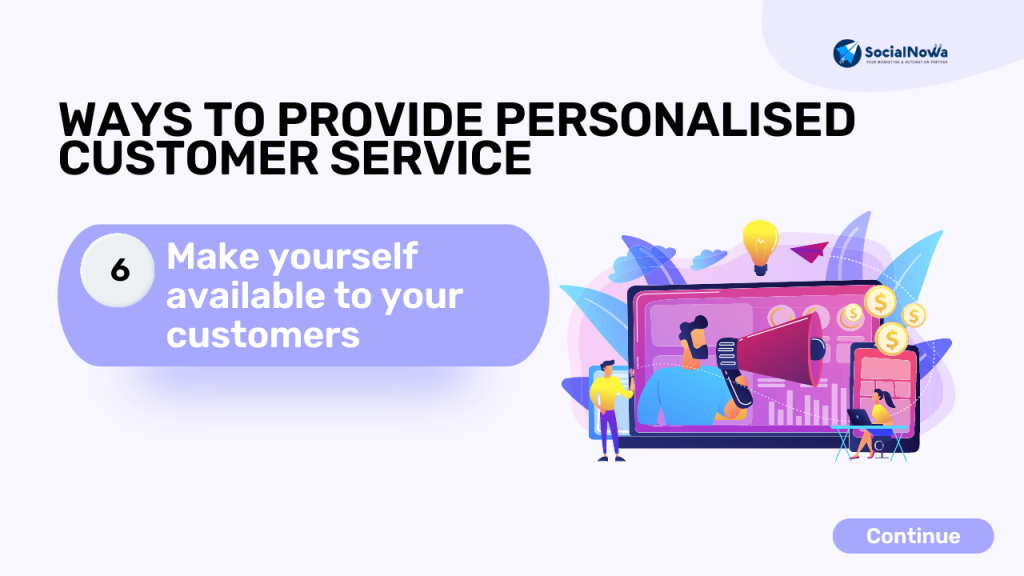
In addition, the employees should respond to client calls in a timely manner.
Companies must also communicate with clients on a regular basis using digital channels such as social media and email. Instant responses and services generate a great impression on customers, encouraging them to use the company’s services in the future.
7.Use Artificial Intelligence (AI) and Virtual Reality to your advantage (VR)
The goal of combining AR and VR is to bridge the gap between real-world and online interactions, giving customers the same sensory experience they would get at a store.
While no technology can replace hands-on product testing or conversations with agents, brands can use the best of AI, AR, and VR to improve the consumer experience.
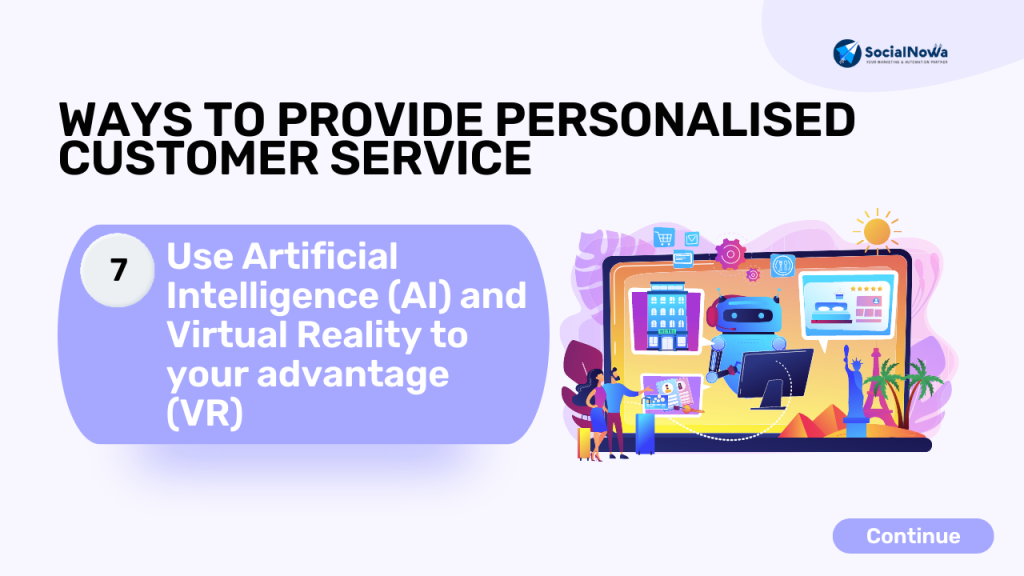
Allow sales and support staff to employ an AI-powered chatbot to converse with visitors, answer their queries, and convert them into qualified leads to automate personalization
By incorporating AR/VR into your marketing approach, you can prioritize experience over items and services, ensuring a tailored and memorable encounter.
8.Customise your messaging based on previous customer experience
The first step toward providing tailored interactions and experiences for your customers is to get to know them better.
When past customer data is available, the customer support team can access it and use it to tailor the experience by referencing previous orders or concerns as examples.
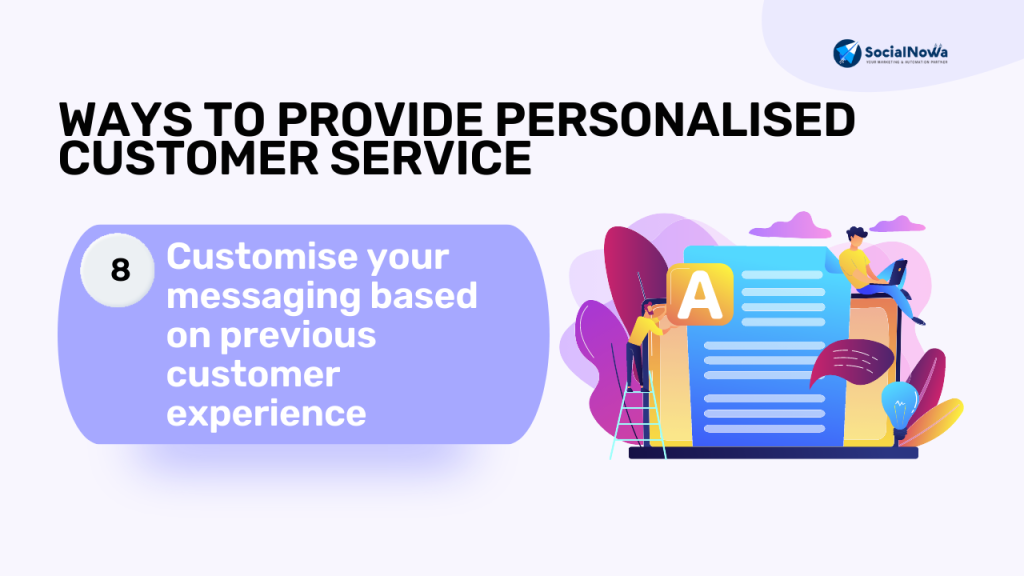
In fact, the e-commerce behemoth takes personalized advertising to new heights by providing customers with contextually relevant offers and experiences.
Conduct customer surveys and opinion polls to have a better understanding of what your customers expect from your company.
Final Thoughts
In a competitive market, a brand’s individualized customer service can help it stand out.
It’s not only about providing personalized customer service. Furthermore, a brand can use it across all of its customer touchpoints to provide a consistent customer experience.
Adding a human touch to augmented reality will almost certainly boost the chances of a personalized client experience.
However, organizations must adapt to changing client preferences, resulting in the development of a unique approach for providing individualized customer care.
Client trust and loyalty should be prioritized, and customer feedback should be implemented wherever possible.
